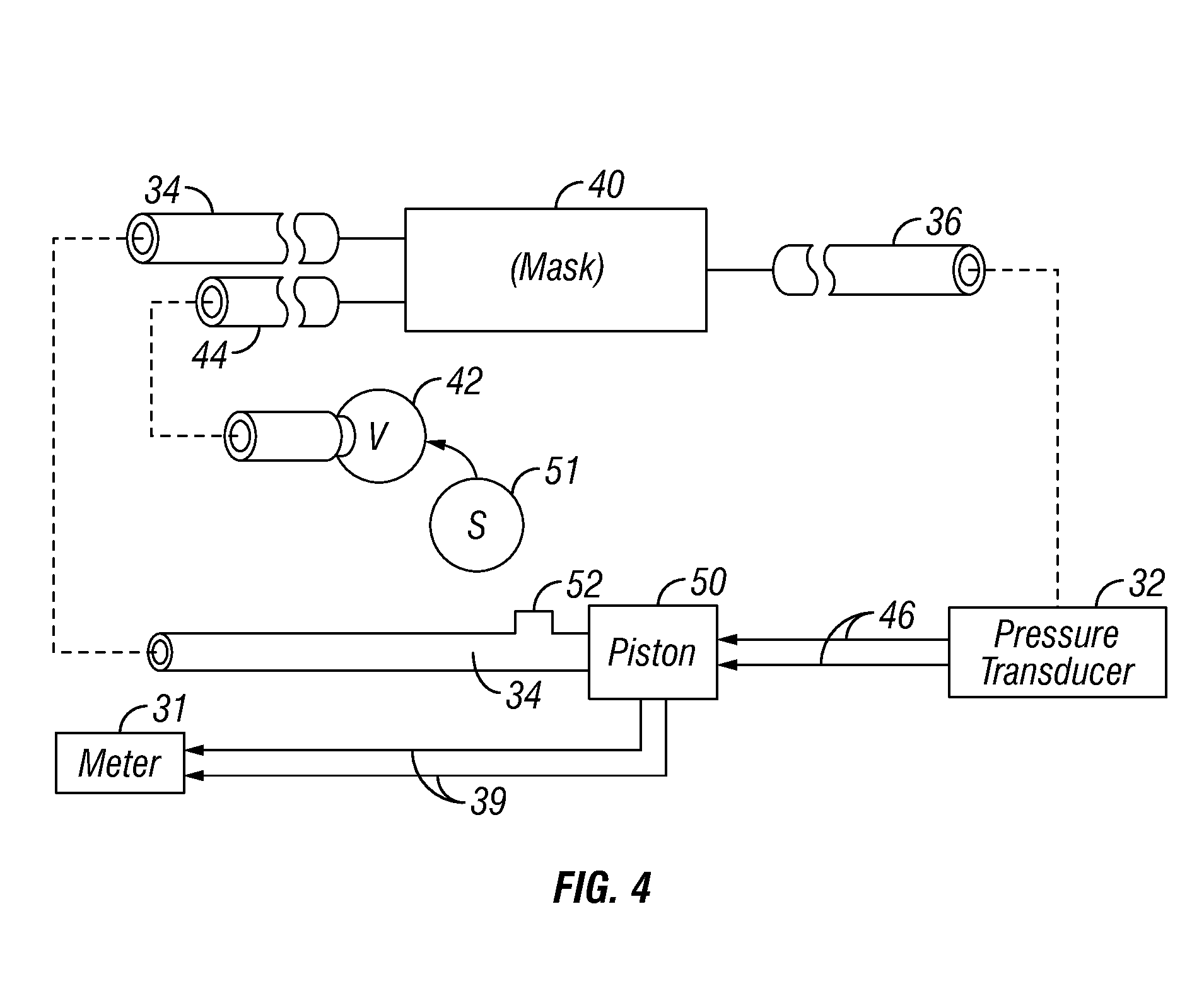Respirator fit-testing apparatus and method
a technology of respirator and fit-testing apparatus, which is applied in the field of respirator face mask, can solve the problems of method problems, complicated methods, and the inability to precisely generate and uniformly disperse contaminant particles in air for these tests, so as to minimize the apprehension of test subjects, improve the accuracy of test results, and simplify test procedures
- Summary
- Abstract
- Description
- Claims
- Application Information
AI Technical Summary
Benefits of technology
Problems solved by technology
Method used
Image
Examples
Embodiment Construction
[0035]The invention relates to improved respirator fit-testing methods and apparatus that include a single automated, respirator wearer-controlled air-leak measurement unit. More particularly, the invention relates to respirator fit-testing methods and apparatus that simplifies test procedures, improve accuracy of test results, minimize test subject apprehension during testing, and provide a better assessment of respirator integrity for a given individual wearer.
[0036]Referring now to FIG. 1, a front view of a prior art respirator or mask 10 for wearing by a party and which covers the party's nose and mouth is illustrated. Firstly, the face piece 12 is constructed of soft pliable rubber or silicone adapted to insure, as far as possible, an air tight seal between itself and the wearer's face. In many respirators, there is an oversized lip around the edge which resides next to the face to insure the best fit possible. Other respirators or masks not illustrated may be expanded in size ...
PUM
 Login to View More
Login to View More Abstract
Description
Claims
Application Information
 Login to View More
Login to View More - R&D
- Intellectual Property
- Life Sciences
- Materials
- Tech Scout
- Unparalleled Data Quality
- Higher Quality Content
- 60% Fewer Hallucinations
Browse by: Latest US Patents, China's latest patents, Technical Efficacy Thesaurus, Application Domain, Technology Topic, Popular Technical Reports.
© 2025 PatSnap. All rights reserved.Legal|Privacy policy|Modern Slavery Act Transparency Statement|Sitemap|About US| Contact US: help@patsnap.com



